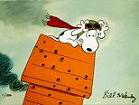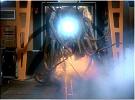chesmart
Posts: 908
Joined: 1/14/2007
From: Malta
Status: offline

|
Lend-Lease was a critical factor in the eventual success of the Allies in World War II[citation needed], particularly in the early years when the United States was not directly involved and the entire burden of the fighting fell on other nations, notably those of the Commonwealth and, after June 1941, the Soviet Union. Although the attack on Pearl Harbor and the Axis Declarations of War brought the US into the war in December 1941, the task of recruiting, training, and equipping U.S. forces and transporting them to war zones could not be completed immediately. Through 1942, and to a lesser extent 1943, the other Allies continued to be responsible for most of the fighting and the supply of military equipment under Lend-Lease was a significant part of their success[citation needed]. In 1943-44, about a fourth of all British munitions came through Lend-Lease. Aircraft (in particular transport aircraft) comprised about one-fourth of the shipments to Britain, followed by food, land vehicles and ships[citation needed]. Even after the United States forces in Europe and the Pacific began to reach full-strength in 1943–1944, Lend-Lease continued. Most remaining allies were largely self-sufficient in front line equipment (such as tanks and fighter aircraft) by this stage, but Lend-Lease provided a useful supplement in this category even so, and Lend-Lease logistical supplies (including motor vehicles and railroad equipment) were of enormous assistance. Much of the aid can be better understood when considering the economic distortions caused by the war. Most belligerent powers cut back severely on production of nonessentials, concentrating on producing weapons. This inevitably produced shortages of related products needed by the military or as part of the military-industrial complex. The USSR was highly dependent on rail transportation, but during the war practically shut down rail equipment production: only about 92 locomotives were produced. 2,000 locomotives and 11,000 railcars were supplied under Lend-Lease. The USSR had a pre-war stock of over 25,000 locomotives and 600,000 railcars. The Lend-Lease stock did not start being shipped until 1944.[citation needed] Likewise, the Soviet air force received 18,700 aircraft, which amounted to about 14% of Soviet aircraft production (19% for military aircraft).[7] Although most Red Army tank units were equipped with Soviet-built tanks, their logistical support was provided by hundreds of thousands of U.S.-made trucks. Indeed by 1945 nearly two-thirds of the truck strength of the Red Army was U.S.-built. Trucks such as the Dodge 3/4 ton and Studebaker 2 1/2 ton, were easily the best trucks available in their class on either side on the Eastern Front.[8] U.S. supplies of telephone cable, aluminum, canned rations, and clothing were also critical. Lend Lease was a critical factor that brought the U.S. into the war, especially on the European front. Hitler cited the Lend-Lease program when he declared war on the U.S. on 11 December 1941.
Wikipedia not the best source but the fastest i could find.
On Tanknet I once saw a list of items supplied by LL to britain and USSR and the amount produced by each country, Without LL the war would have become a stalemate as Russia and britain could not take on Germany on their own they could stop them but not defeat them. Pls remember that by 1944 both USSR and Great Britain where having massive manpower shortrages to an extent that entire divisions where being Disbanded to keep others fighting.
|
 Printable Version
Printable Version


















 New Messages
New Messages No New Messages
No New Messages Hot Topic w/ New Messages
Hot Topic w/ New Messages Hot Topic w/o New Messages
Hot Topic w/o New Messages Locked w/ New Messages
Locked w/ New Messages Locked w/o New Messages
Locked w/o New Messages Post New Thread
Post New Thread